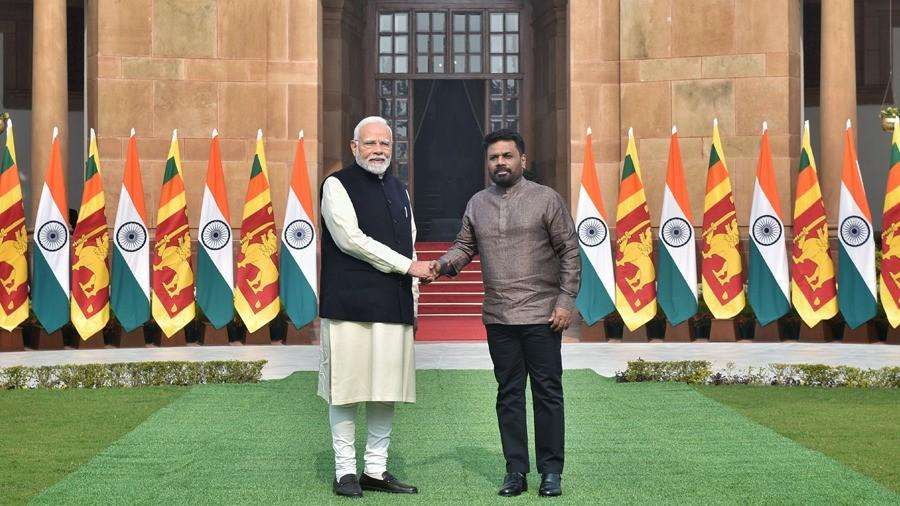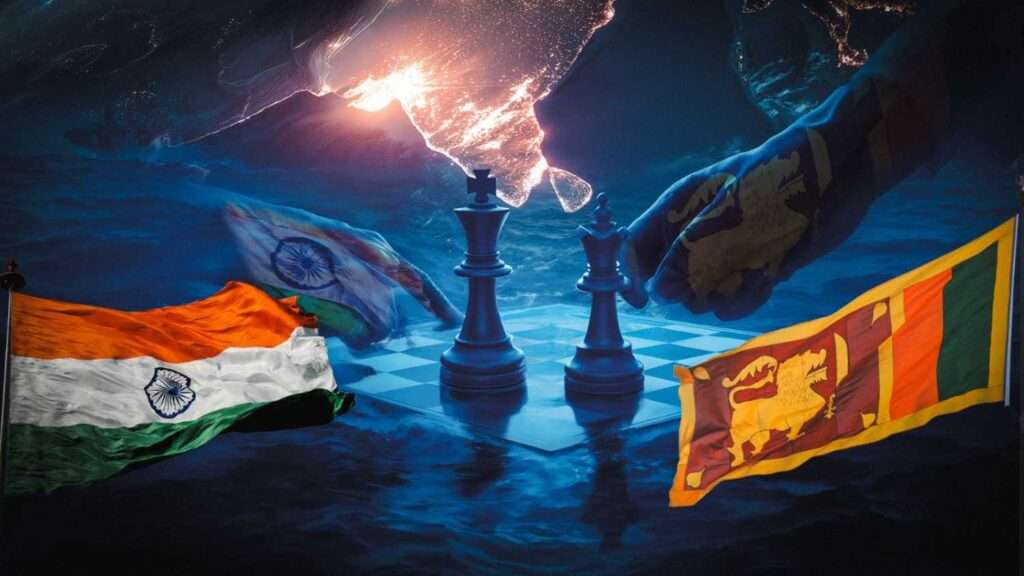The Indian Ocean Region (IOR) is emerging as one of the most strategically vital maritime zones with more than 80% of the world’s maritime oil trade passing through it. The Indian Ocean is home to numerous island nations and island groups, some of which are in close proximity to India. Talking about an island nation located to the south of India that is Sri Lanka. The relations between the two countries are complex and characterized by historical, cultural, and economic ties, as well as some areas of friction.
India-Sri Lanka Relations
India is a key partner for Sri Lanka, particularly in trade, investment, and security, while also facing challenges related to ethnic tensions and maritime security. It has emerged as a frontrunning partner for Island in trying to revive its economy, reform its bureaucracy, and enhance decision-making processes for future economic collaborations. India is Sri Lanka’s largest trade partner and a major source of Foreign Direct Investment (FDI). The India-Sri Lanka Free Trade Agreement (ISFTA) plays a significant role in promoting trade. Since a bilateral free trade agreement was signed and came into effect in 2000, Indo-Sri Lankan trade rose 128% by 2004 and quadrupled by 2006, reaching US$2.6 billion. India is also the fifth largest export destination for Sri Lankan goods, accounting for 3.6% of its exports. The year 2010 is predicted to be the best year for bilateral trade on record, with Sri Lanka’s exports to India increasing by 45% over the first seven months of the year.

India and Sri Lanka- Maritime Dispute
The maritime dispute between India and Sri Lanka revolves around fishing rights in the Palk Bay (Sri Lankan Waters) particularly the Katchatheevu Island area. Indian fishermen frequently cross the International Maritime Boundary Line (IMBL) into Sri Lankan waters, leading to arrests and confrontations with Sri Lankan authorities. India officially protested against the Sri Lankan Navy for its alleged involvement in attacks on Indian fishermen on January 12, 2011. After the official protest, another fisherman was killed on 22 January 2011. As per the sources over 730 fishermen have been killed in the last 3 Decades.
Geopolitical Impact
India and Sri Lanka signed an FDA in 2000 with a bilateral trade of $6 billion in 2022. India is island’s largest trade partner as well as largest FDA contributor at $ 2.2 billion especially in petroleum, retail and tourism. The country has also provided concessional financing of $2 billion to Sri Lanka via various means in difficult and needy times. With this Involvement of the other countries in the Indo-pacific ocean is also impactful in both positive and negative ways. On one side the US focuses on maintaining a free and open Indo-Pacific, including the Indian Ocean, with partnerships and naval presence to counter China’s growing influence. And on the other hand China, with its expanding Belt and Road Initiative and increasing naval presence, aims to secure its economic lifelines and project power in the region. Likewise other countries are also involved in the Indo-pacific region with their own interests.
India Vs China Comparison of Economic Relief Fund Package
In the graph we can see the economic relief provided by India and China to Sri Lanka from the past decade. India’s assistance remained steady at around $150 million annually until 2018, followed by a moderate rise in 2019, a drop in 2020, and a dramatic surge in 2022 to approximately $3.8 billion, its peak during the period likely in response to Sri Lanka’s financial crisis. This was followed by a decline to $1 billion in 2023 and zero in 2024. In contrast, China’s aid was minimal from 2014 to 2017, sharply increased in 2018 and 2021 (peaking near $1.3 billion), but was inconsistent overall and declined significantly after 2021, nearing zero by 2024.

China’s Influence on Sri Lanka
China’s growing influence on Sri Lanka directly impacts India, primarily due to geopolitical and strategic concerns. India views Sri Lanka as within its traditional sphere of influence, and China’s increasing presence, particularly through infrastructure projects like the Hambantota port, is seen as a challenge to India’s regional dominance. And also China’s “String of Pearls” technically refers to a geopolitical theory describing its strategy of developing a network of military and commercial facilities in countries along its sea lanes, primarily in the Indian Ocean region. But this Chinese strategy isn’t just a maritime folk story, it is a geopolitical net tightening around India, as Chinese funded ports and bases encircle the subcontinent with quiet precision.

Sri Lanka was among the first non-communist countries to recognize China after the conclusion of the Chinese civil war. China has deeply penetrated Sri Lanka by heavily investing in the Rajapaksa family. It offered very expensive projects such as the Mattala Rajapaksa International Airport. During Mahinda Rajapaksa’s campaign in 2015, approximately $7.6 million went directly from a majority state-owned Chinese corporation to Rajapaksa’s campaign expenditure. On July 12, 2017, Chinese troops set up the country’s first-ever overseas military base in Djibouti (Africa).
Other Countries Strategic Interests
Talking about other countries such as the US, UK, Japan, Australia, and France, they are all involved in the Indo-Pacific region. The US Viewing Sri Lanka as strategically significant and competing with China in the region. Initiatives like the Partnership for Quality Infrastructure (PQI) and the Indo-Pacific Economic Framework (IPEF) demonstrate its efforts to increase the influence. It has provided financial assistance to Sri Lanka, including a Millennium Challenge Corporation (MCC) grant. Including the US, India, Japan and Australia are also key partners in the Quad. The UK and France have also shifted its focus towards the Indo-Pacific, increasing its defense presence and regional security. Their involvement is multifaceted, including development assistance, security cooperation, and efforts to counter China’s growing influence.
Conclusion
Sri Lanka’s geopolitical significance in the Indian Ocean holds both promise and peril for India. which impacts regional security, maritime trade, and India’s “Neighborhood First” policy. Island’s proximity and historical ties make it crucial for India’s security interests, economic engagement, and counterbalancing influence in the region. On the other hand, external interference from other countries such as the US, UK, France especially from China can disrupt India’s regional aspirations. India needs to be diplomatically, economically, and strategically proactive to ensure Sri Lanka remains an anchor, not a vulnerability, in India’s neighborhood.
Frequently Asked Questions (FAQs):
-
Why is Sri Lanka strategically important to India?
Sri Lanka’s location in the Indian Ocean near key trade routes makes it crucial for India’s maritime security, regional influence, and economic interests. -
What is the core issue in the India-Sri Lanka maritime dispute?
The main dispute centers on fishing rights in the Palk Bay, particularly around Katchatheevu Island, leading to frequent clashes and arrests. -
How does China’s presence in Sri Lanka affect India?
China’s investments in strategic infrastructure like Hambantota Port raise concerns for India over encirclement and diminishing regional influence.

